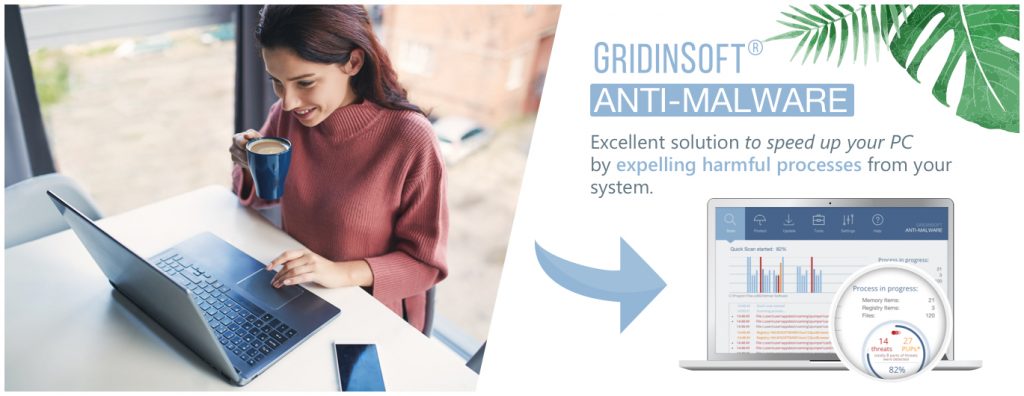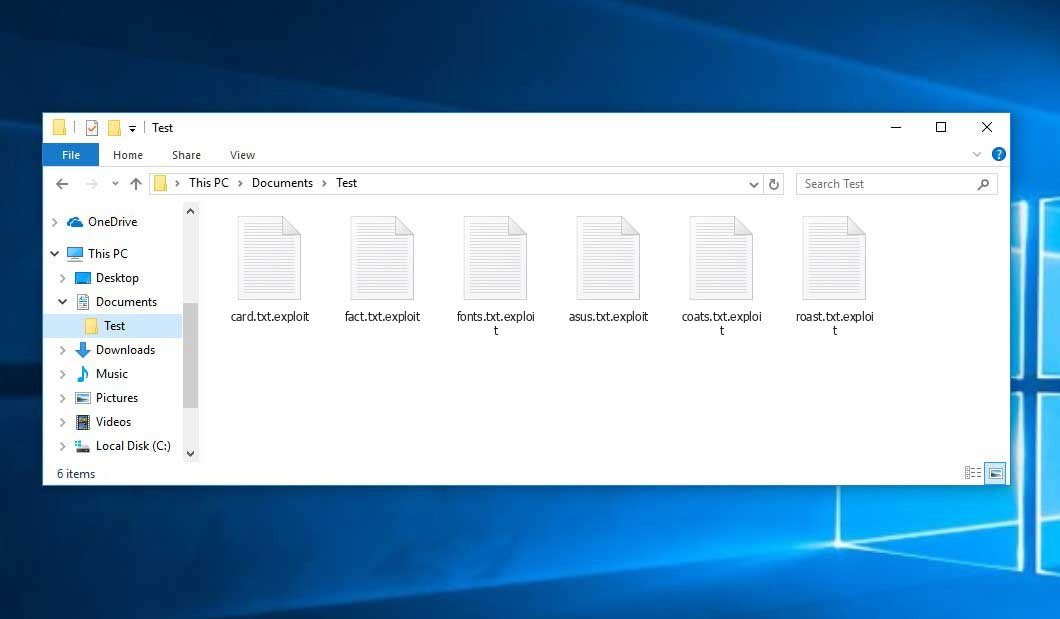How to get rid of Adport.io ads
The Adport.io pop-ups are a social engineering attack that tries to trick users into subscribing to its push notifications so that they can send out undesirable ads straight to your desktop.
These Adport.io pop-up advertisements are triggered either by destructive ads on the sites you go to or adware. This guide was composed to assist Windows users get rid of malware from their devices, if your just trying to find a way to block the Adport.io redirect on a specific site, then you can utilize a totally free web browser extension like Adblock.
When it concerns adware, these destructive programs are bundled with other free software application that you download off of the Internet. Sadly, some complimentary downloads do not adequately divulge that other software application will also be set up and you may find that you have installed adware without your knowledge.
When a malicious program is set up, whenever you will browse the Internet, unwanted ads from Adport.io will pop-up. These Adport.io advertisements will show a “click Allow” message, asking you to register for notifications from this site. If you click on the “Allow” button, then you will start seeing undesirable pop-up ads from Adport.io on your desktop even when your web browser is closed.
Here are a couple of normal indications that you have adware on your system:
- Advertisements appear in places they shouldn’t be.
- Your web browser’s homepage has actually inexplicably altered without your consent.
- Websites that you normally visit are not showing correctly.
- Website links redirect to websites different from what you expected.
- Browser popups appear which suggest fake updates or other software.
- Other unwanted programs might get installed without your knowledge.
Always opt for the custom installation and deselect anything that is not familiar, specifically optional software that you never wished to download and set up in the very first place. It goes without saying that you should not install software that you don’t trust.

How to Remove Adport.io:
Remove Adport.io Automatically:
The easiest method to stop Adport.io ads is to run an anti-malware program capable of detecting adware in general and Adport.io in particular. You may try GridinSoft Anti-Malware. It’s good at detecting and removing adware and other PUPs (potentially unwanted programs).
Other software that may be able to get rid of Adport.io:
Note: After removing the adware you might still need to disable Adport.io notifications manually (see the step named Delete Adport.io Notifications).
You can also try to remove Adport.io by hand using the following instructions.
Remove Adport.io From Programs and Features:
Go to Programs and Features, uninstall suspicious programs, programs you don’t remember installing, or programs you installed just before Adport.io appeared on your browser for the first time. When you are not sure if a program is safe, look for the answer on the Internet.
Windows XP:
- Click Start.
- In the Start menu select Settings => Control Panel.
- Find and click Add or Remove Programs.
- Select the program.
- Click Remove.
Windows Vista:
- Click Start.
- In the Start menu select Control Panel.
- Find and click Uninstall a program.
- Select the program.
- Click Uninstall.
Windows 7:
- Click Start.
- In the Start menu select Control Panel.
- Find and select Programs and Features or Uninstall a program.
- Select the program.
- Click Uninstall.
Windows 8 / Windows 8.1:
- Press and hold Windows key
 and hit X key.
and hit X key. - Select Programs and Features from the menu.
- Select the program.
- Click Uninstall.
Windows 10:
- Press and hold Windows key
 and hit X key.
and hit X key. - Select Programs and Features from the menu.
- Select the program.
- Click Uninstall.
Delete Adware App From File Explorer:
This step is for experienced computer users. You might accidentally delete something you weren’t supposed to. Sometimes malicious programs don’t show up in Programs and Features. Check also %ProgramFiles%, %ProgramFiles(x86)%, and especially %AppData% and %LocalAppData% (these are shortcuts; type or copy and paste them into the address bar of File Explorer). If you see folders with unfamiliar names, see what’s inside, google those names to find out if they belong to legitimate programs. Delete the ones that are obviously associated with malware. If you are not sure, back them up before deleting (copy to a different location, for a example to a thumb drive). Or you can easy to use GridinSoft Anti-Malware for search and remove such files:
Remove Adport.io From Browsers:
Remove any suspicious extensions or extension you don’t recognize from browsers. Or your can easy to use Reset Browser Settings via GridinSoft Anti-malware:
Remove Adport.io from Google Chrome:
- Click on three dots menu button
 at the top right corner of the window.
at the top right corner of the window. - Select More tools ⇒ Extensions.
- Click REMOVE to uninstall an extension.
- Click Remove in the dialog box.
Remove Adport.io from Mozilla Firefox:
- Click on menu button
 and select Add-ons.
and select Add-ons. - Go to Extensions tab.
- To uninstall an add-on, click on Remove button next to it.
Remove Adport.io from Internet Explorer:
- Click Tools button
 in the top-right corner.
in the top-right corner. - Select Manage add-ons.
- In the drop-down menu under Show: select All add-ons.
- To delete an add-on, double-click it; in the new window click Remove.
Remove Adport.io from Opera:
- Press Ctrl +Shift + E keys to open extensions manager.
- To remove an add-on, click on the x button next to it.
- Click OK when asked to confirm.
Remove Adport.io from Safari:
- On the top menu select Safari => Preferences.
- Select Extensions tab.
- Select an extension you want to delete and click Uninstall button next to it.
Delete Adport.io Notifications:
Remove Adport.io Notifications From Google Chrome:
- Open chrome://settings/content/notifications (just copy this and paste into the address bar of Chrome).
- Delete all rogue notifications by clicking three vertical dots button next to each and selecting Remove.
Remove Adport.io Notifications From Mozilla Firefox:
- Click on menu button
 and select Options.
and select Options. - Select Privacy & Security on the left side of the window.
- Scroll down to Permissions section and click Settings… button next to Notifications.
- Find sites you down’t want to see notifications from, click on drop-down menu next to each and select Block.
- Click Save Changes button.
Get rid of Adport.io pop-ups and notifications on Android:
Disable Adport.io notifications:
Note: Steps might differ a little depending on the version of your Android.
- Tap Settings.
- Select Apps & notifications => Apps.
- Find and tap the browser that displays Adport.io notifications.
- Tap Notifications.
- Find Adport.io in the list and disable it.
Stop Adport.io redirects:
If Adport.io is opening up on new tabs in your browser every now and then, that indicates you have adware. Probably one on the apps you installed lately is triggering these pop-ups. Uninstall recenly installed and questionable apps you have. Alternatively, usage Loaris Trojan Remover or one more anti-malware tools to check your device for malware.
Pop-ups and ads on Android may also not be caused by anything set up however originated from sites instead. To get rid of those ads, you can utilize an Trojan Scanner:
How to Protect Your COMPUTER From Adport.io:
- Get a powerful anti-malware software application, capable of identifying and eliminating PUPs. Having several on-demand scanners would certainly be a great suggestion as well.
- Maintain Windows firewall program allowed or get a third-party one.
- Keep your OS, internet browsers as well as safety energies upgraded. Malware developers discover brand-new browser and also OS susceptabilities to make use of constantly. Software writers, subsequently, launch patches and also updates to remove the known susceptabilities as well as minimal the opportunity of malware penetration. Antivirus program’s trademark data sources obtain upgraded each day and much more often to include brand-new infection signatures.
- Readjust your browsers’ setups to block pop-ups and also to fill plug-ins only when clicked.
- Download and install as well as utilize Adguard, uBlock Origin, Adblock or Adblock Plus browser extension/add-on to obstruct third-party promotions on web-sites.
- Don’t just click any kind of link you see while browsing the internet. That uses specifically to web links in comments, on forums, or in instantaneous messengers. Pretty frequently these are spam web links. Occasionally they are utilized for boosting the traffic to websites, but usually adequate they will land you on web pages that will try to implement a malicious code and also contaminate your computer. Links from your good friends are suspicious as well: the individual who shares an adorable video could not understand that the page includes intimidating manuscript.
- Don’t download software application from unproven web-sites. You can easily download and install a trojan (malware that claims to be an useful application); or some unwanted programs could obtain installed in addition to the application.
- When mounting free software or shareware, be reasonable as well as don’t rush via the procedure. Pick Custom or Advanced setup mode, try to find checkboxes that request for your permission to mount third-party applications and also uncheck them, read End User License Agreement to see to it nothing else is going to obtain installed. You can make exceptions for the apps you know and count on, certainly. If declining from installing unwanted programs is not feasible, we encourage you to cancel the setup completely.







adport is a scam network not paying